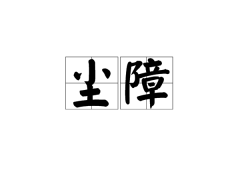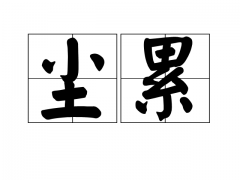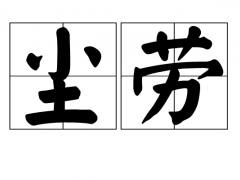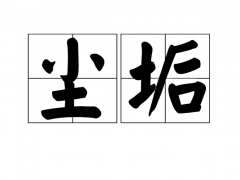+ plus 加号;正号
- minus 减号;负号

± plus or minus 正负号
× is multiplied by 乘号
÷ is divided by 除号
= is equal to 等于号
≠ is not equal to 不等于号
≡ is equivalent to 全等于号
≌ is equal to or approximately equal to 等于或约等于号
≈ is approximately equal to 约等于号
< is less than 小于号
> is more than 大于号
≮ is not less than 不小于号
≯ is not more than 不大于号
≤ is less than or equal to 小于或等于号
≥ is more than or equal to 大于或等于号
% per cent 百分之…
‰ per mill 千分之…
∞ infinity 无限大号
∝ varies as 与…成比例
√ (square) root 平方根
∵ since; because 因为
∴ hence 所以
∷ equals, as (proportion) 等于,成比例
∠ angle 角
⌒ semicircle 半圆
⊙ circle 圆
○ circumference 圆周
π pi 圆周率
△ triangle 三角形
⊥ perpendicular to 垂直于
∪ union of 并,合集
∩ intersection of 交,通集
∫ the integral of …的积分
∑ (sigma) summation of 总和
° degree 度
′ minute 分
〃 second 秒
℃ Celsius system 摄氏度
{ open brace, open curly 左花括号
} close brace, close curly 右花括号
( open parenthesis, open paren 左圆括号
) close parenthesis, close paren 右圆括号
() brakets/ parentheses 括号
[ open bracket 左方括号
] close bracket 右方括号
[] square brackets 方括号
period, dot 句号,点
| vertical bar, vertical virgule 竖线
& ampersand, and, reference, ref 和,引用
asterisk, multiply, star, pointer 星号,乘号,星,指针
/ slash, divide, oblique 斜线,斜杠,除号
// slash-slash, comment 双斜线,注释符
# pound 井号
backslash, sometimes escape 反斜线转义符,有时表示转义符或续行符
~ tilde 波浪符
full stop 句号
, comma 逗号
: colon 冒号
; semicolon 分号
question mark 问号
! exclamation mark (英式英语) exclamation point (美式英语)
' apostrophe 撇号
- hyphen 连字号
-- dash 破折号
dots/ ellipsis 省略号
" single quotation marks 单引号
"" double quotation marks 双引号
‖ parallel 双线号
& ampersand = and
~ swung dash 代字号
§ section; division 分节号
→ arrow 箭号;参见号
.period 句号
,comma 逗号
:colon 冒号
;semicolon 分号
!exclamation 惊叹号
?question mark 问号
 ̄hyphen 连字符
'apostrophe 省略号;所有格符号
—dash 破折号
‘ ’single quotation marks 单引号
“ ”double quotation marks 双引号
( )parentheses 圆括号
[ ]square brackets 方括号
《 》French quotes 法文引号;书名号
ellipsis 省略号
¨tandem colon 双点号
"ditto 同上
‖parallel 双线号
/virgule 斜线号
&ampersand = and
~swung dash 代字号
§section; division 分节号
→arrow 箭号;参见号
+plus 加号;正号
-minus 减号;负号
±plus or minus 正负号
×is multiplied by 乘号

÷is divided by 除号
=is equal to 等于号
≠is not equal to 不等于号
≡is equivalent to 恒等于号
≌is identical to 全等于号
≈is approximately equal to 约等于号
<is less than 小于号
>is more than 大于号
≮is not less than 不小于号
≯is not more than 不大于号
≤is less than or equal to 小于或等于号
≥is more than or equal to 大于或等于号
%per cent 百分之…
‰per mill 千分之…
∞infinity 无限大号
∝varies as 与…成比例
√(square) root 平方根
∵since; because 因为
∴hence 所以
∷equals, as (proportion) 等于,成比例
∠angle 角
⌒semicircle 半圆
⊙circle 圆
○circumference 圆周
πpi 圆周率
△triangle 三角形
⊥perpendicular to 垂直于
∪union of 并,合集
∩intersection of 交,通集
∫the integral of …的积分
∑(sigma) summation of 总和
°degree 度
′minute 分
〃second 秒
#number …号
℃Celsius system 摄氏度
英语句号和普通句号有什么区别
英语中共有14个标点符号,分别是:the period (句号 ),question mark (问号),exclamation point(感叹号), comma(逗号),semicolon(分号),colon(冒号)。
dash(破折号),hyphen(连字符),parentheses(圆括号),brackets(括号 ),braces(括弧), apostrophe(撇号; 省略符号; 所有格符号),quotation marks(引号),and ellipses(省略号)。
Apostrophe(’)的用法
撇号或省字号Apostrophe(’)
1、构成名词所有格。
rest my son’s
a moment’s books
A three weeks’pay
2、表示词、字母、数码、符号等的复数形式。
Don’t use so many ands in the sentence
How many 5s have you got
这与一般单词的复数形式不同,正规的写法须在s前加“’”,要牢记规则。
3、除表动词的紧缩形式外,还表一个或几个字母和数字的省略。
I’ve got it“Yes ,ma’am ,”the waiter said
注意:有相当大一部分省略词是口语中的用法,不宜出现在书面语中。例如:I’d like to(在书面语中要写作I would like to)。
英语句号在三线格中什么位置
英语句号和普通句号的区别在于:中文的句号是空心圈,英文的句号是实心圆点。句号是标点符号的一种,是用于陈述句末尾的标点。文章内使用的时机有:陈述句末尾的停顿用句号;语气舒缓的祈使句末尾,也用句号;也可以用在直述式文意已完足的句子;在有些时候,句号也可以用在语气舒缓的反问句的末尾。句号表示一句话的结束,新一句话的开始,提示读者该句的表达意思已结束。西式的句号也被称作句点,注意西式的句点不同于中文中的省略号。
英语句号和逗号的用法有什么不一样呢?
在第三行。
逗号,句号这种小符号在第三行写,问号或感叹号的话就在第二行和第四行之间,可以少稍长一些,但不能四行占满。冒号就在第二行和第三行中间写。
四线三格记心间,拼音字母住里边。声调、圆点写上格,胳膊长了住上格,尾巴长了住下格,其它部分在中格。中格一定要饱满,上格、下格空一点儿,书写规则记心间,拼音才能写规范。
扩展资料:
中文标点书写
句号、逗号、顿号、分号、冒号均置于相应文字之后,占一个字位置,居左下,不出现在一行之首。
问号、叹号均置于相应文字之后,占一个字位置,居左,不出现在一行之首。两个问号(或叹号)叠用时,占一个字位置;三个问号(或叹号)叠用时,占两个字位置;问号和叹号连用时,占一个字位置。
引号、括号、书名号中的两部分标在相应项目的两端,各占一个字的位置。其中前一半不出现在一行之末,后一半不出现在一行之首。
破折号标在相应项目之间,占两个字位置,上下居中,不能中间断开分处上行之末和下行之首。
省略号占两个字位置,两个省略号连用时占四个字位置并须单独占一行。省略号不能中间断开分处上行之末和下行之首。
连接号中的短横线比汉字“一”略短,占半个字位置;一字线比汉字“一”略长,占一个字位置;浪纹线占一个字位置。连接号上下居中,不出现在一行之首。
间隔号标在需要隔开的项目之间,占半个字位置,上下居中,不出现在一行之首。
着重号和专名号标在相应文字的下边。
分隔号占半个字位置,不出现在一行之首或一行之末。
标点符号排在一行末尾时,若为全角字符则应占半角字符的宽度(即半个字位置),以使视觉效果更美观。
在实际编辑出版工作中,为排版美观、方便阅读等需要,或为避免某一小节最后一个汉字转行或出现在另外一页开头等情况(浪费版面及视觉效果差),可适当压缩标点符号所占用的空间。
1、如果前面一个句子有连词的话,动词一般用动词原形。例如:
If she comes again,tell her that I am not at home 如果她再来,告诉她我不在家。
2、如果前面一个句子没有连词的话,并且前面没有-ing分词或-ed分词的话,动词一般用-ing形式或动词不定式。例如:
He stood there,singing 他站在那里唱歌。(表示伴随)
He hurried to the station,only to find that the train had left 他匆匆赶到车站,结果发现火车已经开走了。(意外的结果)
3、如果前面有-ing形式或-ed分词的话,动词要用动词原形。例如:
Answering questions,speak aloud,please 回答问题,请大声说出来。
扩展资料
英语逗号的用法
1、逗号在三个或以上词或词组并列时,用来分隔这些词、词组。
例句: I love fish, chicken, beef and lamb 我喜欢鱼肉、鸡肉和羊肉。
2、逗号用来分隔可以相互替换的形容词。
例句:He is a strong, healthy man 他是一个强壮、健康的男子汉。
3、逗号用于连接词。
例句:He drives very well, but often too fast 他车开得不错,但是总是开得太快。
4、逗号用于两个独立子句之间。在第一个子句结束之后,在诸如:and 或 but连接词之前,使用逗号。
例句:He drove all the way to the beach, and had a swim 他开车直奔海滩,游了泳。
5、在一个句子开始前,在诸如well,yes,why,hello和hey词之后使用逗号。
例句:Yes, I agree that the winter has been very mild 是的,我同意这个冬季气温很温和。
6、逗号用于分隔以nevertheless,after all,by the way,on the other hand和however开头的短语。
例句:I want to visit my parent’s house this weekend, on the other hand, I would like to finish my assignment 我想本周末访问我父母的家,不过,我又想完成我的作业。

7、逗号用于标志引语的开始。
例句:Peter noted, ‘the staff of the hospital arrive between 10 am and 11 am each day” 彼得表示,“医院职员每天要在上午10点到11点抵达”。
8、逗号用于分隔表达相反意思的两个短句。
例句:The whole of the city was covered in smoke, except the hill top 除了山顶地区,整座城市被浓烟笼罩。
























